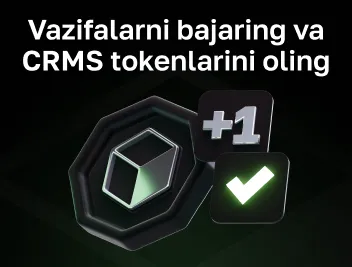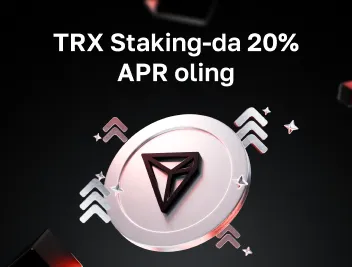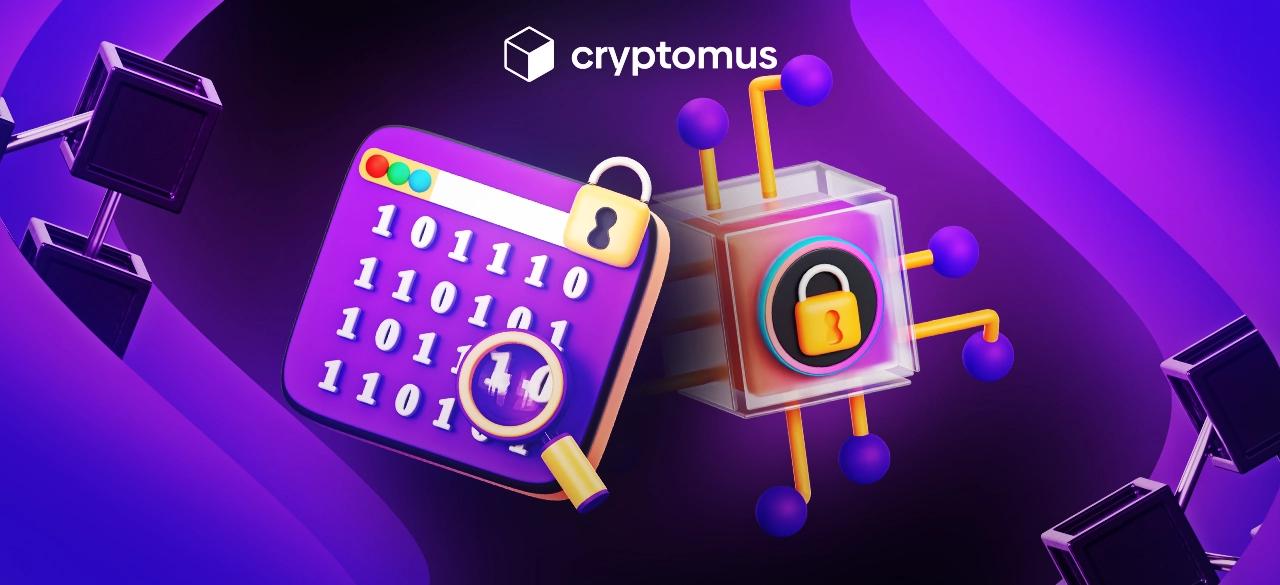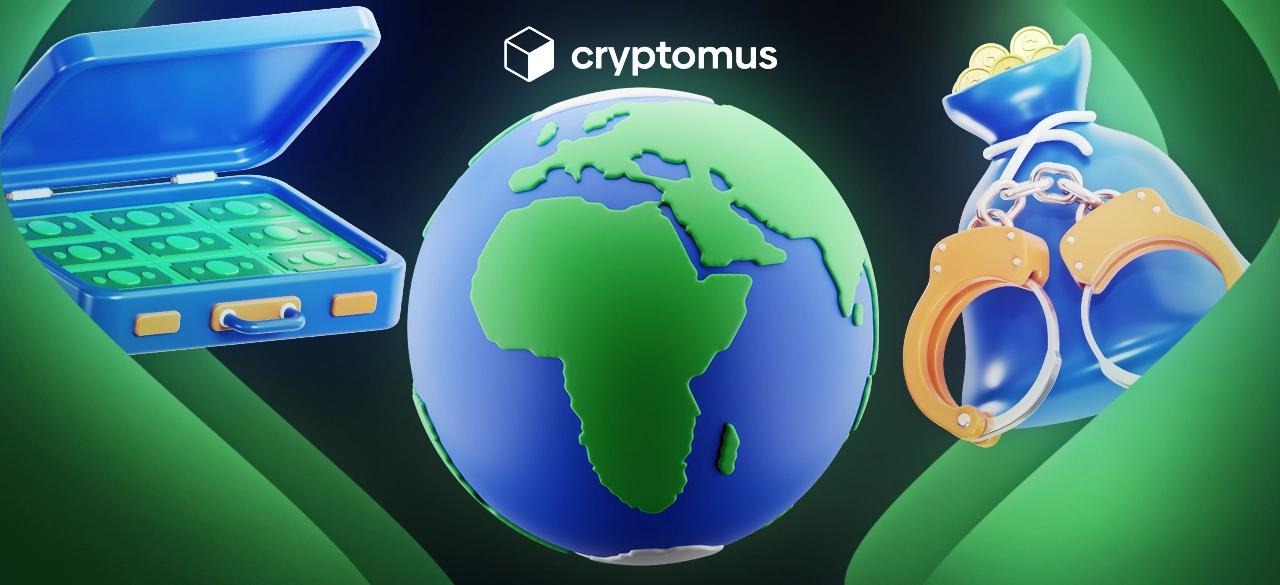
Nechta Kriptovalyuta Mavjud?
Kriptovalyuta sohasi o'zining o'zgaruvchan va beqaror tabiat bilan tanilgan, shuning uchun ko'pchilik hozirgi vaqtda bozorning aniq nechta kriptovalyutasi mavjudligini aytib bera olmaydi. Bugun biz ushbu savolga javob berishga harakat qilamiz, shunda sizga bu katta tadqiqotni o'zingiz amalga oshirishga to'g'ri kelmaydi.
Tarixiy Ko'rinish
Mana, kriptovalyutalar haqida yilma-yil tarixiy ko'rinish:
| Yil | Kriptovalyutalar soni | O'tgan yildan o'sish foizi | |
|---|---|---|---|
| 2009 | Kriptovalyutalar soni1 | O'tgan yildan o'sish foizi— | |
| 2010 | Kriptovalyutalar soni2 | O'tgan yildan o'sish foizi100% | |
| 2011 | Kriptovalyutalar soni5 | O'tgan yildan o'sish foizi150% | |
| 2012 | Kriptovalyutalar soni10 | O'tgan yildan o'sish foizi100% | |
| 2013 | Kriptovalyutalar soni~60 | O'tgan yildan o'sish foizi500% | |
| 2014 | Kriptovalyutalar soni~500 | O'tgan yildan o'sish foizi733% | |
| 2015 | Kriptovalyutalar soni~700 | O'tgan yildan o'sish foizi40% | |
| 2016 | Kriptovalyutalar soni~700 | O'tgan yildan o'sish foizi0% | |
| 2017 | Kriptovalyutalar soni~1,300 | O'tgan yildan o'sish foizi85% | |
| 2018 | Kriptovalyutalar soni~1,500 | O'tgan yildan o'sish foizi15% | |
| 2019 | Kriptovalyutalar soni~2,000 | O'tgan yildan o'sish foizi33% | |
| 2020 | Kriptovalyutalar soni~5,000 | O'tgan yildan o'sish foizi150% | |
| 2021 | Kriptovalyutalar soni~6,000 | O'tgan yildan o'sish foizi20% | |
| 2022 | Kriptovalyutalar soni~7,000 | O'tgan yildan o'sish foizi17% | |
| 2023 | Kriptovalyutalar soni~8,000 | O'tgan yildan o'sish foizi14% | |
| 2024 | Kriptovalyutalar soni~10,038 | O'tgan yildan o'sish foizi25% |
2009
2009 yilda birinchi kriptovalyuta - Bitcoin (BTC) taqdim etildi. Bu kriptovalyutalar sanoatining boshlanishi bo'lib, faqat bir kriptovalyuta mavjud edi. Ushbu yilda Bitcoin hali eksperimental va niş texnologiya bo'lib, sezilarli o'sish bo'lmadi.
2010
2010 yilda Bitcoin biroz mashhurroq bo'ldi va ikkinchi kriptovalyuta bo'lgan Namecoin (NMC) yaratildi.
2011
2011 yilda Litecoin (LTC) kabi bir nechta alternativ tangalar paydo bo'ldi, bu bozorni diversifikatsiya qildi. Yil oxiriga borib, kriptovalyutalar soni sezilarli darajada oshdi, beshta kriptovalyutaga yetib, 150% o'sishni ko'rsatdi.
2012
2012 yili sekin, ammo barqaror o'sish yili bo'ldi. Yil oxiriga borib, 10 ta kriptovalyuta aylanma jarayonda bo'lib, o'tgan yilning umumiy miqdorini ikki baravar oshirdi.
2013
2013 yilda kriptovalyutalar bozori portlab ketdi. Bitcoinning ommaviyligi ortishi boshqa kriptovalyutalarning yaratilishiga olib keldi, jumladan Ripple (XRP) va Dogecoin (DOGE), bu esa sanoatni mustahkamladi. 2013 yil oxiriga kelib, ~60 ta kriptovalyuta mavjud bo'ldi, bu o'tgan yilga nisbatan 500% o'sish edi.
2014
2014 yilda altcoinlar ko'tarildi va haqiqiy xilma-xillikka ega bo'lgan kriptovalyuta ekotizimi boshlandi. Kriptovalyutalar soni ~500 taga ko'tarildi, yangi asosiy blockchain loyihalari, masalan, Ethereum (ETH), taqdim etildi. 2013 yildan o'sish 733% ni tashkil etdi, bu bozorda katta kengayishni ko'rsatdi.
2015
2015 yilda kriptovalyutalar soni ~700 ga yetdi. Ethereumning 2014 yilda ishga tushirilishi katta o'sishga hissa qo'shdi, ammo yangi loyihalar jihatidan yil sekin o'tdi, faqat 40% o'sish bo'ldi.
2016
2016 yilda kriptovalyutalar bozori barqarorlashdi va jami ~700 ta faol tangalar mavjud bo'ldi, bu 2015 yildagi darajani saqlab qolgan holda. Yangi tangalar yaratish sur'ati sekinlashdi, ammo kelajakdagi o'sish uchun asoslar qo'yildi, ICOlarning ko'tarilishi kelajakda rivojlanishga olib keladigan omil bo'ldi.
2017
2017 yil kriptovalyutalar uchun muhim yili bo'ldi, bozorda portlash yuz berdi. Kriptovalyutalar soni ~1,300 ga ko'tarildi, bu o'tgan yilga nisbatan 85% o'sishni anglatadi. Bu davrda ICOlar ko'tarilib, minglab yangi tokenlar yaratildi. Bitcoin, Ethereum kabi kriptovalyutalar va yangi kirgan Ripple (XRP) kabi loyihalar sezilarli mashhurlikka erishdi.
2018
2018 yil 2017 yildagi katta o'sishdan keyin bozorning tuzalishi bilan belgilandi. Ammo, umumiy kriptovalyutalar soni o'sishda davom etdi va yil oxiriga borib, ~1,500 ga yetdi. O'sish 2017 yilga nisbatan 15% ga sekinlashdi, bu bozorning pishib borayotganini ko'rsatadi.
2019
2019 yilga kelib, 2,000 dan ortiq kriptovalyutalar mavjud edi. DeFi (decentralized finance) platformalari va loyihalarining ko'payishi bu o'sishga hissa qo'shdi. Bozor 33% ga o'sdi, bu esa Bitcoin tashqari blockchain va kriptovalyutalar ilovalariga bo'lgan davom etayotgan qiziqishni ko'rsatdi.
2020
2020 yilda kriptovalyutalar soni keskin o'sdi va yil oxiriga kelib ~5,000 ga yetdi, 150% o'sishni tashkil etdi. Bu yil DeFi, NFT (Non-Fungible Tokens) va blockchain texnologiyalarining kengroq qabul qilinishi bilan belgilandi.
2021
2021 yilda bozor tez o'sishni davom ettirib, ~6,000 kriptovalyutalarga yetdi. O'sish sur'ati 20% ga sekinlashdi, ammo yil NFTlar, DeFi va blockchain o'yinlarining portlashli o'sishi bilan belgilandi.
2022
2022 yilda kriptovalyutalar ekotizimi ~7,000 ta loyihaga yetdi, bu o'tgan yildan 17% o'sdi. Kripto qish va bozor pasayishi bo'lishiga qaramay, sektor innovatsion qolib, Ethereum 2.0 va Metavers bilan bog'liq tokenlar diqqat markaziga tushdi.
2023
2023 yilga kelib, kriptovalyutalar bozorida katta kengayish yuz berdi va ~8,000 dan ortiq kriptovalyutalar mavjud bo'ldi. Bu 14% o'sishni anglatadi, yangi loyihalar bozor muammolariga qaramay paydo bo'lib, Web3, DeFi va NFTlar kabi yangi tendensiyalar sanoatda asosiy diqqat markazi bo'ldi.
2024
CoinMarketCap ma'lumotlariga ko'ra, 2024 yil noyabr holatiga ko'ra, kriptovalyutalar bozori muhim bir yutuqqa erishdi va 10,038 ta kriptovalyuta aylanma jarayonda bo'lib, o'tgan yilga nisbatan 25% o'sishni ko'rsatdi. Bu o'sish, blockchain o'zaro bog'liqligi, DeFi va Web3 ilovalarining kengayishi kabi sohalardagi yangiliklar bilan qo'llab-quvvatlanmoqda.

Hozirgi Holat
2024 yilda, kriptovalyutalar ekotizimi juda xilma-xil bo'lib, minglab tokenlar turli kategoriyalar bo'yicha mavjud. Quyida turli turlar va tasniflar asosida kriptovalyutalar haqidagi hozirgi holatning umumiy ko'rinishi keltirilgan. Bu ma'lumotlar CoinMarketCap va boshqa kr
ipto kuzatuv platformalaridan olingan jamoatga taqdim etilgan ma'lumotlarga asoslangan.
~10,038 kriptovalyutalar hozirda mavjud. Bunga asosiy loyihalar, maxsus blockchainlarda tokenlar va turli niş loyihalar kiradi.
Nechta Stablecoin mavjud?
~190 stablecoinlar hozirda aylanma jarayonda. Bu kriptovalyutalar an'anaviy aktivlarga, masalan, AQSh dollariga yoki oltinga bog'langan. Mashhur stablecoinlar orasida Tether (USDT), USD Coin (USDC), Dai (DAI) va TrueUSD (TUSD) mavjud. Stablecoinlar asosan to'lovlar qilish, o'zgaruvchanlikka qarshi himoya sifatida va DeFi platformalarida ishlatiladi.
Nechta Meme Coin mavjud?
~3222 meme coinlar 2024 yil holatiga ko'ra aylanma jarayonda. Bu kategoriyada Dogecoin (DOGE), Shiba Inu (SHIB), Floki Inu (FLOKI) va boshqa ko'plab kriptovalyutalar mavjud bo'lib, ular viral marketing, internet madaniyati yoki mashhurlar tomonidan reklama qilingan. Meme coinlar ko'pincha yuqori narx o'zgaruvchanligi va spekulyatsion qiziqishni boshdan kechiradi, ammo ular kriptoning kengroq ijtimoiy va madaniy tendentsiyalari doirasida keng qabul qilindi.
Nechta Proof of Work (PoW) asosidagi Kriptovalyutalar mavjud?
~186 PoW asosidagi kriptovalyutalar hozirda mavjud. Ularga Bitcoin (BTC), PoW asosidagi konsensusning pioni, va Litecoin (LTC), Bitcoin Cash (BCH) va Monero (XMR) kabi boshqa tangalar kiradi. PoW tarmoqlari ko'pincha ularning yuqori energiya sarfini tanqid qiladi, ammo ular kriptovalyutalar ekotizimi uchun muhim hisoblanadi.
Nechta Proof of Stake (PoS) asosidagi Kriptovalyutalar mavjud?
~84 PoS asosidagi kriptovalyutalar hozirda faol. PoS asosidagi tarmoqlar, masalan, Ethereum 2.0 (ETH), Cardano (ADA), Polkadot (DOT) va Solana (SOL) PoW ga nisbatan energiya samaradorligi tufayli mashhur alternativalarga aylandi. PoS tangalari odatda foydalanuvchilardan tarmoqni himoya qilish va tranzaksiyalarni tasdiqlash uchun tokenlarini bloklashni talab qiladi, bu esa PoWga nisbatan ekologik jihatdan samarali yechim taqdim etadi.
DeFi (Decentralized Finance) bilan bog'liq Tokenlar necha dona mavjud?
190 dan ortiq DeFi bilan bog'liq tokenlar mavjud. Bu tokenlar markazlashtirilmagan moliyaviy platformalar bilan bog'liq bo'lib, ular banklar kabi an'anaviy vositachilarni qo'llab-quvvatlamasdan qarz berish, qarz olish, savdo qilish va foyda olish kabi faoliyatlarni amalga oshiradi. Uniswap (UNI), Aave (AAVE), MakerDAO (MKR) va Synthetix (SNX) DeFi kriptolaridan eng mashhurlari hisoblanadi.
NFT bilan bog'liq tokenlar necha dona mavjud?
Bir nechta yuzlab tokenlar NFT (Non-Fungible Token) sohasiga aloqador, ular Flow (FLOW), Decentraland (MANA) va The Sandbox (SAND) kabi tangalardan foydalanib, virtual dunyolarda va metaverslarda NFT sotib olish, sotish va savdo qilishda qo'llaniladi.
Solana Ekotizimi tokenlari necha dona mavjud?
2024 yil holatiga ko'ra, Solana ekotizimida 765 token mavjud. Solana blockchaini markazlashtirilmagan dasturlar (dApp) qurish uchun eng mashhur platformalardan biriga aylandi, natijada DeFi, NFTs, o'yinlar va boshqa turli kategoriyalarni o'z ichiga olgan tokenlar xilma-xilligi mavjud. Solana ekotizimidagi ba'zi mashhur tokenlar Serum (SRM), Solana (SOL), Raydium (RAY) va Mango Markets (MNGO).
Ethereum Ekotizimi tokenlari necha dona mavjud?
Ethereum ekotizimi yanada rivojlangan bo'lib, unga 800 dan ortiq tokenlar tegishli. Bunga Ethereumning ERC-20 standarti (smart contract asosidagi tokenlar yaratishda keng qo'llaniladi), ERC-721 (NFTlar uchun) va boshqa maxsus Ethereum asosidagi tokenlar kiradi. Bu ekotizimdagi mashhur kriptolar Ether (ETH), Uniswap (UNI), Chainlink (LINK), USD Coin (USDC) va **Tether (USDT)**ni o'z ichiga oladi. Ethereum ekotizimi keng va xilma-xildir, u DeFi, NFTs va DAOsdan turli foydalanuvchi holatlariga qadar ko'plab sohalarni qo'llab-quvvatlaydi.
Blockchainlar necha dona mavjud?
2024 yil holatiga ko'ra, 1,000 dan ortiq blockchain faoliyat ko'rsatmoqda. Bunga yaxshi o'rnatilgan blockchainlar, masalan, Bitcoin (BTC), Ethereum (ETH), Solana (SOL) va Cardano (ADA) kiradi, shuningdek, ma'lum bir muammolarni hal qilishni maqsad qilgan kichik va yangi tarmoqlar ham mavjud. Shuningdek, sidechainlar va Layer 2 yechimlari blockchain tarmoqlarining sonini oshiradi. Ba'zi blockchainlar DeFi yoki NFTs kabi maxsus foydalanish holatlariga mo'ljallangan. Mashhur Layer 2 yechimlari (masalan, Polygon (POL)) va o'zaro ishlash platformalari (masalan, Polkadot (DOT)) ham umumiy blockchainlar landshaftining kengayishiga hissa qo'shadi.
2024 yilda kriptovalyuta bozori juda keng va tobora xilma-xillashib bormoqda, ko'plab tokenlar ekotizimdagi turli foydalanish holatlarini ifodalaydi. Stablecoinlar, PoS va DeFi tokenlari doimiy o'sishda bo'lsa, meme coinlar portlashli o'sishni ko'rsatdi, bu esa ijtimoiy tarmoqlar va kripto qabul qilishda viral tendentsiyalar ta'sirining ortib borishini ko'rsatadi. Bu soha tezda rivojlanib bormoqda, yangi token turlari ma'lum muammolarni hal qilish uchun paydo bo'lmoqda, masalan, masshtablashuv, maxfiylik va markazlashtirilmagan boshqaruv.
Ushbu maqolani foydali deb topdingizmi? Uni o'qish yoqdi mi? Yana savollaringiz bormi? Quyidagi izohlarda bizga bildiring!
Maqolaga baho bering








Izohlar
0
Fikr qoldirish uchun tizimga kirgan bo'lishingiz kerak